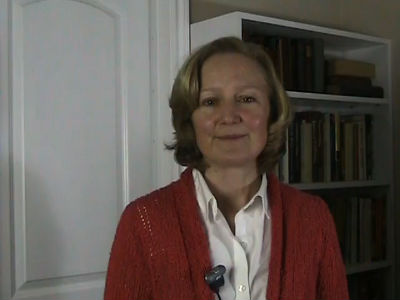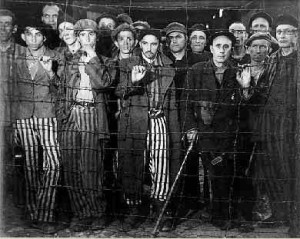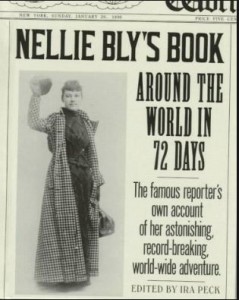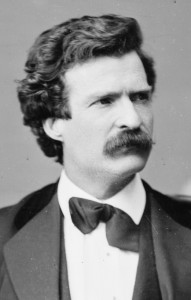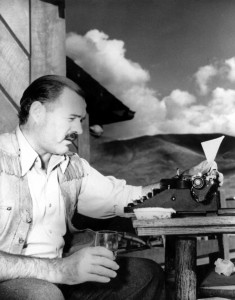[wpdm_file id=2]
Click on PDF button to download lesson plan
Unit Two: The Reporter: before convergence
Summary for teachers of lesson’s objectives:
- Teacher Objective: To give context to the concept of convergence in journalism through a retrospective of a reporter’s role in the 19th and 20th centuries, and how a reporter back then specialized in a certain medium
- Student Objective: To understand that long before convergence, a reporter usually specialized in a certain medium using the tools available at the time. however, then, as now, it’s the story that counts.
The multi-media world is not new to teens. They play interactive games on the internet, they snap-chat, blog, tweet like it’s second nature to them. They have the skills noted below, or can learn them; however, they need to know how to tell a single story incorporating all that media they use already.
“Today the successful journalist must project his/her narrative skills to a cross-media environment and write also for mobile phones and iPads. This means shooting, cropping, editing and captioning pictures; recording editing and publishing audio reports and podcasts; shooting and editing video, creating packages and streaming live reports, interacting with user-generated content…including search engine optimization; geo-tagging, geo-coding and geo-broadcasting.” (Boers, Ercan, Rinsdorf, & Vaagan, 2012)
Also, what the teen students must understand is that despite the latest and greatest tools of convergence, there first has to be a story someone wants to hear, read or experience. One red flag I see raised with this aspect of newsworthiness is that teens today think everything is worthy of being shared. Often they don’t seem to grasp the varying levels of appropriateness with what they share. We teachers can use this as a teaching moment about questioning the WHY something should be shared. As this course’s textbook, “Telling The Story,” informs us, “…what news is can be summarized in three words: relevance, usefulness, interest.” (Brooks, Kennedy, Moen, & Ranly, 2010) (I might add that the interest element should not appeal to prurient interests. I mention this only because in the news recently teens have posted video and pictures of sexual assaults of girls.) This lesson will help students learn to identify legitimate news and see how riveting it can be, depending on the story, and depending on the medium used to tell that story.
Activity:
COMMUNICATION AND COLLABORATION:
HOMEWORK ASSESSMENT:
Students will present homework from the last unit in which they had to develop simple phrases that were not news. The girls will give the boys a list of 10 simple phrases which the boys then have to make into news with an added phrase. The boys will give the girls the list they made of simple phrases which the girls will then make into news statements. Both teams will go into their own adobe meeting room to make the non-news statements into news. They will get 3 minutes to work, and then they will present to the whole class.
Introduce this segment of the lesson which has examples of radio, photography, live television, and print news stories from the 20th and 19th centuries.
1. Edward R. Murrow radio story of Air Force planes flying into Berlin during World War II Ask students what words created images in their minds, or a visual of the scene. What emotions did they feel? Talk about radio being the source of news for the student’s grandparents and great-grandparents.
Ed Murrow Reports (CLICK ON THIS LINK TO HEAR MURROW AUDIO REPORT)
(Links to radio story: “Edward R. Murrow Reports” on Sound Board downloadable for 99 cents). http://www.soundboard.com/
2. Discuss Margaret Bourke-White’s photograph below of the men after the liberation of Buchenwald in World War II. She traveled with Gen. George Patton to the concentration camp on April 15, 1945. Bourke-White had been traveling with the American soldiers when they crossed the Rhine River.
Buchenwald in World War II. She traveled with Gen. George Patton to the concentration camp on April 15, 1945. Bourke-White had been traveling with the American soldiers when they crossed the Rhine River.
Ask students what it is about Bourke-White’s photograph of the concentration camp above that holds our attention. Point out that this is news in one single image; no words, no movement.
http://www.scrapbookpages.com/Buchenwald/Liberation7.html
3. Walter Cronkite and Eric Sevareid on CBS News during the first moon landing. Here the reporters are observers, just like the audience. Discuss how LIVE coverage allowed the viewer to participate. What emotions did the anchormen show?
http://www.youtube.com/watch?v=p7c-PbfnQuw
4. 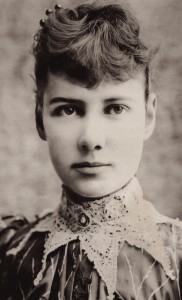 Nellie Bly’s story of her undercover work in an insane asylum for The World in 1887. Her story prompted New York State to reform the standards for committing a woman to the Women’s Lunatic Asylum on Blackwell’s Island.
Nellie Bly’s story of her undercover work in an insane asylum for The World in 1887. Her story prompted New York State to reform the standards for committing a woman to the Women’s Lunatic Asylum on Blackwell’s Island.
Nellie Bly’s next notable venture was a trip around the world to challenge Jules Verne’s “Around the World in Eighty Days” novel. Bly made the trip alone in 72 days. The World newspaper sponsored a “Nellie Bly Guessing Match” asking readers to guess the time Nellie would arrive back home. The newspaper was trying to involve their readers. Nellie created her own stories. http://digital.library.upenn.edu/women/bly/madhouse/madhouse.html
5. Samuel Clemens (Mark Twain) worked as a journalist writing feature articles for multiple newspapers from Missouri to California. Clemens started using “Mark Twain” as his pen name when working for the Virginia City, Nevada newspaper, Territorial Enterprise. (Source is link below)
http://www.pbs.org/weta/thewest/
6. “Hemingway used his experiences as a reporter during the civil war in Spain as the background for his most ambitious novel, For Whom the Bell Tolls (1940).” (Source is link below
http://www.nobelprize.org/nobel_prizes/literature/laureates/1954/hemingway-bio.html
7. Herodotus is called the Father of History. He could also be called the Father of Journalism. “Herodotus (484?–425? BC), the Greek historian who became known as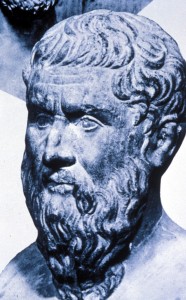 the Father of History, wore out his shoe leather traveling throughout the Middle East to produce his account of the fifth-century bc conflict between the Greeks and the Persians.” (Chandrasekaran, 2007)
the Father of History, wore out his shoe leather traveling throughout the Middle East to produce his account of the fifth-century bc conflict between the Greeks and the Persians.” (Chandrasekaran, 2007)
Herodotus knew the importance of accuracy.
“Herodotus, no less than Thucydides, thought of his History as a thing different from epic poetry –as much more bound by the necessity of covering the actual great events truly.” (Herodotus, 1988)
Ask students for similarities between history and news stories. (Their list should include: recording of events that are of import and interest to people; and, truth and accuracy being paramount on the part of the reporter or historian.)
http://www.wilsonquarterly.com/article.cfm?AID=1879
Walter Williams’ Journalist’s Creed:
I BELIEVE THAT THE PUBLIC JOURNAL IS A PUBLIC TRUST; THAT ALL CONNECTED WITH IT ARE, TO THE FULL MEASURE OF THEIR RESPONSIBILITY, TRUSTEES FOR THE PUBLIC; THAT ACCEPTANCE OF A LESSER SERVICE THAN THE PUBLIC SERVICE IS A BETRAYAL OF THIS TRUST.
Teacher: Discuss these words in the paragraph above: public trust; trustees; betrayal. Those are strong words. Are they warranted?
Homework:
Read “Telling The Story,” Chapter 1, pages 1-15
Teacher explanation: Topics for next week’s discussion include: convergence; accuracy, fairness and objectivity
To Do: (Collaboration and Cooperation) Research the online sites for your local newspapers, or your favorite news sources (national or local). Send me your two favorite links. I will then OK them and post them on our class Facebook page (open only to this class). Then each of you must investigate at least two sites that are listed other than your own, and chat with your classmates on the page about which ones you liked and why. Each of you must post at least two comments about what appeals to you about each of the two sites you review:
- Is the site landing page easy to read?
- Is it clear how the stories are organized?
- What stories did you click on and why?
- Were they easy to navigate?
- Are there any interactive stories? What are they, and how are they interactive?
Please bring your notes to class next week so we can discuss as we take a look at a few of the sites.
Assessment: Homework will help the students discover online news sources. The discussion with classmates on Facebook will help students get to know each other and to bond as a class.

